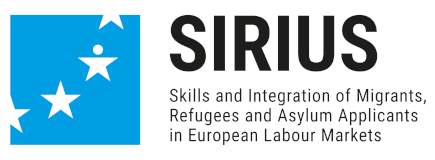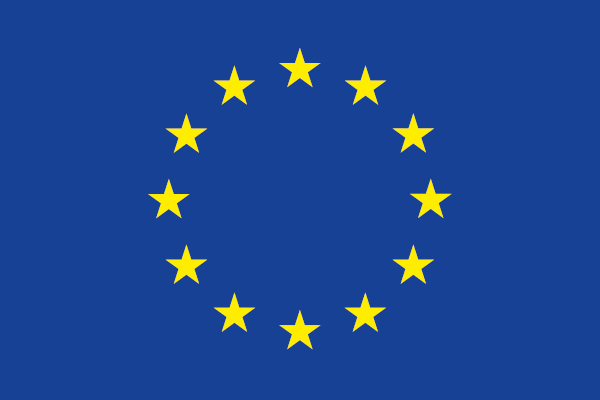Software
As part of the work on Work Package 1, we have used our findings to create two pieces of software free for use. Below you can find descriptions of the two pieces of software together with links to them.
ECONOMETRIC SOFTWARE
The econometric software identifies the labour “absorbing sectors” in the SIRIUS economies, i.e. Czech Republic (CZ), Denmark (DK), Finland (FI), Greece (GR), Italy (IT), United Kingdom (UK) and Switzerland (CH). Each economy is disaggregated into four (4) main sectors of economic activity: primary, manufacturing, secondary and tertiary sector. The software models each sector through the time series variables of output and labour. Note that for the economies of Czech Republic (CZ), Switzerland (CH) and Finland (FI), their sectoral models have been augmented with the sectors of the United Kingdom (UK), due to the fact that the UK has been found to affect statistically significantly their labour dynamics, due to spillover effects that have been modelled separately. In this context, the software estimates the sectoral Vector Autoregressive models (VAR) for the selected economy and produces the respective Orthogonalized Impulse Response Functions (OIRFs) for a horizon of two (2) years, i.e. twenty-four (24) months. The OIRFs estimated by the software present the response of the sectoral labour of the selected economy to unit shocks (equal to one standard deviation) in the sectoral output of the selected economy. Finally, the software provides the user with the opportunity to conduct scenario analyses by entering the relevant percentage change (%) for the sectors of the economy that the user has selected. Separate guidelines are offered in a PDF in the link below.
Link to software (will open in new tab)
INPUT – OUTPUT SOFTWARE
The aim of the online input-output software is to provide a roadmap for the matching of skills and qualifications of Migrants, Refugees and Asylum Seekers (MRAs) across the sectors and the occupations of the economy. This approach, which builds on relevant Input-Output methods, could increase MRAs employability and optimize their integration process. According to the model used based on the software, the employability potential of MRAs for each economy is determined according to the employment features of the specific economy and the skills of MRAs. The methodology employed includes three stages:
In the first stage, the employment features of the examined economy are approached through two composite indicators, focusing on the sectoral structure of employment and on the occupational structure of employment, respectively. These composite indicators are the Growth Indicator for Sectors (GIS) and the Growth Potential Indicator for Occupations (GIO).
In the second stage, the skill level of MRAs is compared with the skill level of the employees of the examined country. The comparison is carried out by sector of economic activity and by occupation and creates two indicators: the Sectoral Structure Similarity (SSS) and the Occupational Structure Similarity (OSS).
In the third stage, two new composite indicators are calculated with respect to sectors and occupations, by combining the indicators calculated in the first two stages. These composite indicators indicate which sectors and occupations of the economy, have simultaneously a high growth potential and are more similar to the MRAs skills. In this sense, we identify the sectors and occupations, which are more suitable for promoting MRAs employability.
These sectors and occupations are identified through the calculation of two (2) composite indicators, the SIRIUS Indicator for Sectors (SIRIUS 1) and the SIRIUS Indicator for Occupations (SIRIUS 2).
To this end, at the first stage, the growth potential of each sector and each occupation is calculated. The calculation of a sector’s or an occupation’s growth potential, relatively to all the other sectors and all the other occupations of an economy, respectively, is a multidimensional concept. The software utilizes a model for the measurement of growth potential, based on a set of composite indicators: The Growth Indicator for Sectors (GIS) and the Growth Potential Indicator for Occupations (GIO). The composite GIS can be used to rank the importance of the sectors of an economy to promote employment, and GIO can be used to rank the capability of the occupations of an economy to promote employment.
GIS and GIO integrate different aspects of employment characteristics. GIS contains seven (7) key performance indicators and GIO four (4) indicators. Both composite indicators express, in a nutshell, the complex sectoral and occupational performance of an economy, respectively. The complex assessment of the employment’s growth potential with respect to sectors and occupations helps to uncover: (a) the weaknesses of an economy, that could become threats for employment; and (b) to identify the strengths, which could lead to employability opportunities.
At the second stage, the indicators of Sectoral Structure Similarity (SSS) and the Occupational Structure Similarity (OSS) are calculated. Both indicators express the similarity level of the current structure with the skills (measured with the educational attainment level) of MRAs.
Finally, the last stage provides a combination of GIS with SSS and of GIO with OSS, which leads to two (2) new composite indicators, namely the SIRIUS Indicator for Sectors (SIRIUS 1) and the SIRIUS Indicator for Occupations (SIRIUS 2). SIRIUS 1 and SIRIUS 2 are used to rank the sectors and the occupations of each country as sectors of high and low priority for the integration of MRAs. The rank-order of the SIRIUS Indicator for Sectors provides the integration priorities at the sectoral level of analysis as an answer to the question: Which sectors of an economy have simultaneously high growth potential and required skills level compatible to MRAs skills? The rank-order of the SIRIUS Indicator for Occupations provides the integration priorities at the occupational level as an answer to the question: Which occupations of an economy have simultaneously high growth potential and required skills level compatible to MRAs skills?
Link to software (will open in new tab)
Any further requests on how to interpret the result of the software should be directed to Dr. Spyridon Stelios at stelioss@central.ntua.gr


